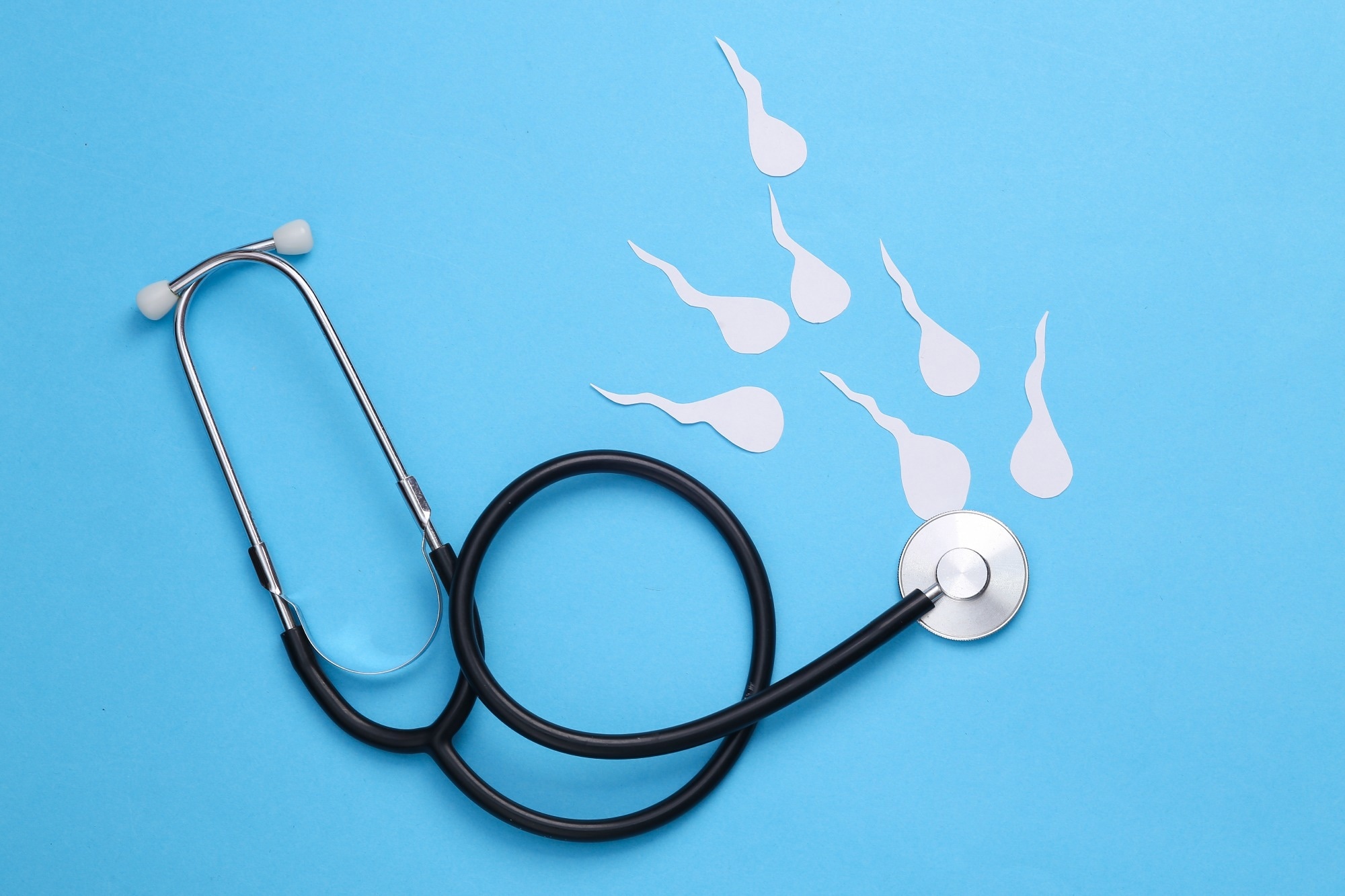They further discussed the potential clinical effects of air pollution on male reproductive outcomes and the role of oxidative stress in the process.
 Study: Implications of Exposure to Air Pollution on Male Reproduction: The Role of Oxidative Stress. Image Credit: Vladimir Sukhachev/Shutterstock.com
Study: Implications of Exposure to Air Pollution on Male Reproduction: The Role of Oxidative Stress. Image Credit: Vladimir Sukhachev/Shutterstock.com
Background
A global decline in male fertility potential, average sperm count, and concentration has been reported in several studies. Lifestyle factors, environmental exposure, and prenatal conditions are implicated as potential causes of this decline.
The increasing socioeconomic burden of male infertility emphasizes the need for thorough investigations into its multifactorial etiology.
Air pollution is a significant global health concern affecting almost 2.4 billion people, causing over 6.4 million deaths annually. The classification of air pollutants is complex, involving parameters such as phase, source, location, and multiple emission sources, with primary and secondary pollutants originating from both natural and human activities.
Exposure to air pollutants such as carbon monoxide (CO), nitrogen dioxide (NO2), sulfur dioxide (SO2), ozone (O3), and particulate matter (PM) is known to contribute to various short- and long-term health problems, resulting in public health concerns.
While PM exposure is associated with cardiovascular and respiratory diseases, NO2, O3, CO, and SO2 have distinct roles in respiratory disorders, cardiovascular issues, and overall well-being, as detailed by previous studies.
Previous studies have explored the impact of air pollution on male fertility. The findings are conflicting, with some indicating negative effects on semen quality, motility, concentration, morphology, and DNA integrity, while others show no association.
As there remains a need for a comprehensive understanding of the impact of air pollution on male reproductive health, the present review aimed to collate relevant evidence and additionally shed light on clinical considerations.
Effect of air pollution on male reproductive parameters: Evidence from animal and human studies
Various human and animal studies have explored the link between air pollution and basic and advanced male reproductive parameters. Animal studies suggest that exposure to PM2.5 leads to reduced sperm count, motility, and increased abnormal morphology in rodents, while inconsistent findings were observed for sperm morphology with PM10 exposure.
Pollutants like SO2 were also associated with increased testicular oxidative stress, decreased spermatogonia stem cells, and reduced sperm count. While duration and seasonality of exposure are shown to influence these outcomes, the underlying mechanisms include altered hormonal balance, oxidative stress, and inflammation initiation.
Human studies show that air pollution may reduce semen quality, affecting parameters such as volume, sperm concentration, motility, and morphology. Seasonality plays a role, with significant adverse effects observed during spring and autumn.
Although most studies indicate a negative impact of common pollutants on sperm parameters, further research is required to confirm these findings.
Furthermore, human and animal studies suggest that exposure to these pollutants affects immediate reproductive potential and induces epigenetic changes in the male offspring.
Exposure to environmental pollutants also induces deoxyribonucleic acid (DNA) damage and DNA fragmentation, affecting sperm quality. Pollutants contribute to sperm aneuploidy, with higher prevalence in humans compared to other animals, leading to adverse reproductive outcomes.
Studies show that environmental pollution alters gene expression through epigenetic modifications, disrupting regulatory mechanisms in reproductive cells.
Genetic variations, mutations, and copy number variations result from pollutant exposure, increasing disease susceptibility. Additionally, air pollutants and endocrine disruptors shorten telomere length in sperm cells, reflecting accelerated aging and heightened disease risk.
Effect on male sexual health
Exposure to air pollution is found to be positively correlated with erectile dysfunction in human studies. Animal studies also indicate a potential link between PM2.5 exposure and impotence. Additionally, long-term combined exposure to air pollutants is linked to an increased risk of depression and anxiety, particularly affecting male mental health. Furthermore, occupational exposure to Bisphenol A, considered an air pollutant, is associated with a higher risk of male sexual dysfunction.
Effect on reproductive outcomes
Studies exploring the impact of air pollution on reproductive outcomes present mixed findings. Associations are observed between ambient air pollutants and reduced pregnancy rates in patients undergoing in vitro fertilization (IVF), with disparities across different populations and methodologies.
These disparities may be potentially explained by retrospective study designs, diverse demographic backgrounds, and individual exposure variations.
Mechanisms of action
Air pollutants may enter the body through inhalation, dermal uptake, or ingestion, exhibiting diverse molecular mechanisms impacting male fertility. The key explored pathways are oxidative stress, inflammation, apoptosis, and blood–testis barrier disruption.
Prolonged exposure to pollutants may produce reactive oxygen species (ROS), causing sperm damage and affecting hormone regulation, leading to diminished fertility potential.
Conclusion
In conclusion, air pollution may negatively affect a range of male reproductive parameters, sexual health, and reproductive outcomes through various mechanisms.
The alarming rise in male infertility and the current findings together highlight the need for increased awareness and comprehensive research to facilitate regulatory action towards mitigating the impact of air pollution on male reproductive potential.